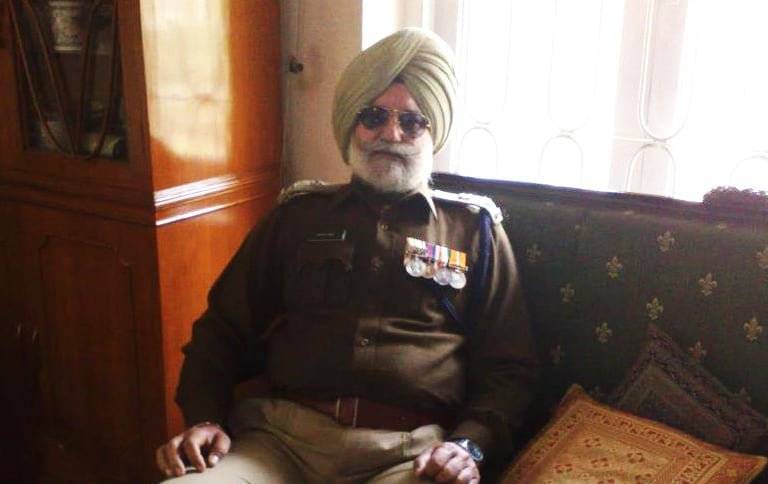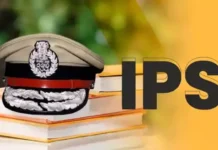
The original inhabitants of Andaman & Nicobar Islands were six aboriginal tribes, namely Andamanese, Jarawas, Onges, Sentinelese, Nicobarese and Shompens. The first four are from Negrito stock, confined to Andaman Islands. Nicobarese and Shompens trace their descent from Mongoloid ancestry, inhabiting southern group of Nicobar Islands.
Jarawas most widespread, roaming the wild wooded tracts of South, middle and North Andamans. Sentinelese being confined within the precincts of North Sentinel Island, falling directly under the air traffic route arriving from Chennai, living in total isolation since centuries.
Andamanese totally assimilated within the mainstream of humanity, some of them even employed in government service. Onges due to their vulnerability were rehabilitated in government encampment at Andaman Island.
Nicobarese were versatile tribesmen spread in Nicobar Islands. Shompens few hundred in number, was a fast dwindling tribe they remained confined within the secure protection of official patronage.
Bush Policing, Unique concept :
Bush Police was a unique police institution, only one of its kind in the Republic of India. This unit had been specially raised to provide an protective umbrella of security coverage mainly for Jarawa tribe who lived in wilderness of the Andamans. The Andamanese and Onges were harmlessly docile.
Isolated ferocious Sentinelese remained entrenched within the confines of highly inapproachable North Sentinel Island. They were famed for use of two metre long arrows, the longest to be used by any pristine tribesmen in the world. Bush policemen basically remained deployed on the outer peripheral fringes of Jarawa dwellings.
Policemen were bound to keep these tribesmen in their native areas, while prohibiting other civilized persons entering these protected locals.The bush police camps were located at strategic spots consisting of thatched hutments. My keen inquisitiveness stimulated me to personally visit the actual location of these jungle camps and acquire factual awareness of their fascinating exposition. It proved to be an eye opening experience.
These monitoring observation placements were self sufficient units situated right in the thick of godforsaken isolation of deep jungles. Except for WT communication these camps remained totally cutoff from the civilization. No electric power, no generating sets, just kerosene hurricane lamps, no running water etc.
These hardy policemen armed with .303 Enfield bolt action rifles and .410 smooth bore muskets with ample ammunition, both single projectile plus buck shots. A variety of sharp knives and assorted wood cutting tools, were available with them. They reared goats and poultry mainly for milk and eggs, invariably maintaining self sufficient kitchen gardens. Growing a variety of fresh vegetables, beans, gourds, chillies, tapioca, turmeric, ginger, garlic, coriander, lemon, papaya, bananas, pineapples, guava etc.
These policemen were dexterous in use of bamboo and cane, often shaping these abundantly growing natural elements into attractive furniture pieces. They indulged in lucrative pastime of hunting and fishing by using handy indigenous self made snares and traps. Bush police every month asked for replenishment of expended ammunition which was used for ‘scaring away Jarawas’.
Practically it was used for selective hunting, specially of wild boar, which provided them meat and fat for general cooking. Culling honey from large wild honeycombs, catered to their much needed sugar requirements, they were experts in curative use of wild herbs.
Jarawas killed 17 workers :
Andaman grand trunk road connects Port Blair, South Andaman with Diglipur in the North, passing through forested areas inhabited by Jarawas. During building of this 299 km. NH4 highway, a road construction party was attacked by Jarawas, killing 17 persons on the spot. Jarawas way laid these workers at Poona nullah slaughtering them in a swift surprise attack, withdrawing along with their scalps.
This incident proved to be a major setback for this controversial road project cutting right through the aboriginal tribal heartland. These pristine tribesmen were experts in wooded ambush warfare, attacks were based on stealth coupled with lightning speed. While laying ambush they divided into three parties, concealing themselves among cover of thick trees. Once quarry was right in front of the middle party their attack commenced with a loud wild war cry, leaving the intruder dead in his tracks. If missed other parties observantly waiting towards left or right finished the remaining job.
Daredevil officer P V Sinari :
My immediate boss was a daredevil of a man in form of P V Sinari, who as a teenager had taken part in guerrilla warfare against the Portuguese in Goa. Displaying his foolhardy valour, he along with his loyal lieutenant Inspector Rattan Singh, set foot on the fabled north Sentinel Island. Traversing final landing in a small dingy, carefully gliding over the spiky corals.
A few Sentinel tribal lads were jubilantly playing on the sandy beach along the undisturbed seashore, a short distant away were their thatched inhabitations. Displaying a gesture of goodwill he cradled one child in his arms.
Simultaneously a group of Sentinels making a dreaded war cry rushed towards them in a menacing manner, showering a few long arrows. P V Sinari fired a few shots in air to scare them, this slowed down their threatening advancement, one arrow got struck in his life jacket. Meanwhile they both clambered across to their awaiting dingy, paddling away swiftly to reach securely to safe haven of their boat. This lucky jacket was proudly displayed at the Police Headquarters at Port Blair.
Since this episode happened to be completely unauthorized landing it could not officially qualify to form a part of any recorded chronicle.
Bhakhtawar Singh’s love for Andaman :
One young Punjab Police officer, long back in 1935 during the British rule, had a fascination of serving in Andaman Islands. Bhakhtawar Singh volunteered to join Andaman police, he was the first man to establish direct contact with Jarawa tribesmen.
Many a interesting incidents revolve around the daring adventures of this incredible personality, he evolved a personal rapport with hundreds of these highly hostile indigenous people. Bakhtawar Singh achieved distinction of being the pioneer civilized human being to establish first contact with the Jarawas. He joined Andaman police as Constable and after a highly relished long meritorious service retired as Deputy Superintendent.
During the entire post retirement period he remained actively associated with the tribal contact programmes and contributing positively towards planning for their general welfare.
(HPS Virk is the Author of this article . He retired as Deputy Commissioner of Delhi Police and he has written the article on the basis of his personal experiences during years 1982-85 , when he was posted in A&N islands)















